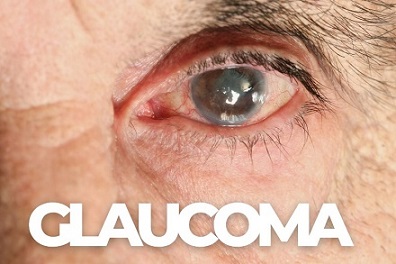Glaucoma News: Scientists Discover That Myo/Nog Cells Play A Protective Role In Mitigating Ganglion Cell Death During Rise In IOP
Nikhil Prasad Fact checked by:Thailand Medical News Team Nov 19, 2023 1 year, 4 months, 4 weeks, 1 day, 15 hours, 5 minutes ago
Glaucoma News: Glaucoma, a formidable adversary in the realm of eye diseases, stands as a leading cause of irreversible blindness worldwide. Its insidious progression, often unnoticed until advanced stages, poses a substantial public health concern. The underlying pathophysiology of glaucoma involves an increase in intraocular pressure (IOP), leading to damage to the ganglion cells of the retina and the optic nerve. Recent research covered in this
Glaucoma News report, conducted by the Philadelphia College of Osteopathic Medicine in the USA and the University "G. d'Annunzio" Chieti-Pescara in Italy has shed light on a potential game-changer in the fight against glaucoma-induced vision loss: Myo/Nog (M/N) cells.
 The Glaucoma Challenge
The Glaucoma Challenge
The journey to understand and combat glaucoma begins with recognizing its diverse manifestations. Closed-angle glaucoma manifests acutely, causing pain and rapid vision loss. On the other hand, open-angle glaucoma progresses more gradually, often without noticeable symptoms until significant damage has occurred. Despite their distinct presentations, both forms converge on a common outcome: ganglion cell death, optic nerve damage, and irreversible blindness.
Insights from Mouse Models
The use of mouse models has proven instrumental in unraveling the complexities of glaucoma. The injection of microbeads into the anterior chamber of the eye serves as a valuable tool in replicating the conditions of open-angle glaucoma. This method obstructs aqueous humor outflow, leading to increased IOP and subsequent ganglion cell loss. Mouse models provide a controlled environment for studying the factors involved in IOP elevation and testing potential therapeutic interventions.
Myo/Nog Cells: The Unseen Guardians
The focus of this groundbreaking study was the behavior of Myo/Nog (M/N) cells in response to elevated IOP in a modified murine glaucoma model. Named for their expression of MyoD, Noggin, and BAI1, M/N cells have demonstrated responsiveness to various ocular perturbations. These cells are activated in response to stressors such as hypoxia, cell death, injuries, and even cancer, rapidly accumulating in areas of distress within the eye.
A Remarkable Response
Intriguingly, the injection of microbeads into the anterior chamber induced a remarkable increase in BAI1-positive M/N cells in critical eye structures. These included the trabecular meshwork, ciliary body, canal of Schlemm, cornea, and the ganglion cell layer. Furthermore, M/N cells were observed ingesting microbeads, hinting at their potential role in the clearance of these impediments.
Reinforcement with Exogenous M/N Cells
To delve deeper into the protective role of M/N cells, brain-derived M/N cells were introduced into the anterior chamber. While this supplementation did not significantly reduce IOP, it resulted in a substantial increase in the number of retinal ganglion cells (RGCs) and a thicker nerve fiber layer in glaucomatous eyes compared to controls. The addition of M/N cells demonstrated a neuroprotective effect within the retina, emphasizing their potential as th
erapeutic agents in glaucoma.
Clearance Mechanisms and Protective Factors
M/N cells exhibited a remarkable ability to clear microbeads and protect against RGC loss. The phagocytic nature of M/N cells was evident as they ingested not only microbeads but also tattoo ink in the skin and dead cells in the lens and retina. This unique capability highlights the potential of M/N cells in maintaining ocular homeostasis and mitigating stress-induced damage.
Understanding the Neuroprotective Effect
The neuroprotective effect of M/N cells in glaucoma is hypothesized to involve multiple mechanisms, with a focus on the regulation of the BMP signaling pathway through the release of Noggin. M/N cells, being a primary source of Noggin, play a crucial role in normal CNS and eye development. The study suggests that the mitigation of RGC loss by M/N cells is more than a consequence of IOP reduction, pointing towards their active involvement in neuroprotection within the vitreous and retina.
Future Implications and Therapeutic Prospects
The findings of this study underscore the potential of Myo/Nog cells as therapeutic agents in glaucoma and other retinopathies. Understanding the intricate mechanisms by which M/N cells operate and interact with other cell types, such as macrophages and microglia, holds the key to developing targeted interventions. Mechanistic studies are crucial for harnessing the therapeutic potential of M/N cells and the molecules they release, paving the way for innovative approaches to tackle glaucoma and preserve vision.
A Glimpse into the Future
As the scientific community embraces these revelations, the potential for Myo/Nog cells to revolutionize glaucoma treatment becomes increasingly evident. Harnessing the regenerative and protective capabilities of these cells may pave the way for novel therapeutic strategies. The intricacies of M/N cell behavior, their interaction with surrounding cells, and the specific mechanisms behind their neuroprotective effects are ripe areas for future research.
Conclusion
In conclusion, the discovery of the protective role played by Myo/Nog cells in mitigating ganglion cell death during elevated IOP marks a significant advancement in our understanding of glaucoma. The study's insights into the behavior and functions of M/N cells open new avenues for therapeutic exploration. As researchers delve deeper into the intricate mechanisms at play, the hope is that these findings will translate into effective treatments, offering a beacon of hope for individuals at risk of or affected by glaucoma. The journey to unveil the full potential of Myo/Nog cells as guardians against glaucoma-induced vision loss is just beginning, promising a brighter future for those battling this silent thief of sight.
The study findings were published in the peer reviewed journal: Applied Sciences.
Thailand Medical News will also be covering in a future article as to how phytochemicals from herbs can also help upregulate Myo/Nog (M/N) cells.
https://www.mdpi.com/2076-3417/13/22/12423
For the latest
Glaucoma News, keep on logging to Thailand Medical News.
